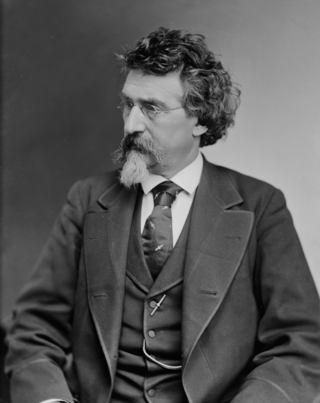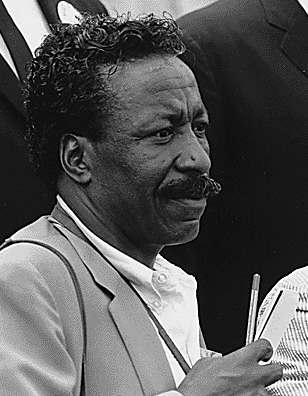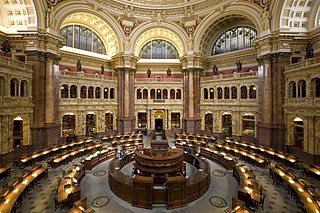Related Research Articles

Mathew B. Brady was an American photographer. Known as one of the earliest and most famous photographers in American history, he is best known for his scenes of the Civil War. He studied under inventor Samuel Morse, who pioneered the daguerreotype technique in America. Brady opened his own studio in New York City in 1844, and went on to photograph U.S. presidents John Quincy Adams, Abraham Lincoln, and Martin Van Buren, among other public figures.

Sergey Mikhaylovich Prokudin-Gorsky was a Russian chemist and photographer. He is best known for his pioneering work in colour photography and his effort to document early 20th-century Russia.

"The Saint Louis Blues" is a popular American song composed by W. C. Handy in the blues style and published in September 1914. It was one of the first blues songs to succeed as a pop song and remains a fundamental part of jazz musicians' repertoire. Benny Goodman, Louis Armstrong, Cab Calloway, Bing Crosby, Bessie Smith, Eartha Kitt, Count Basie, Glenn Miller, Guy Lombardo, Peanuts Hucko, and the Boston Pops Orchestra are among the artists who have recorded it. The song has been called "the jazzman's Hamlet". Composer William Grant Still arranged a version of the song in 1916 while working with Handy.

The American Civil War was the most widely covered conflict of the 19th century. The images would provide posterity with a comprehensive visual record of the war and its leading figures, and make a powerful impression on the populace. Something not generally known by the public is the fact that roughly 70% of the war's documentary photography was captured by the twin lenses of a stereo camera. The American Civil War was the first war in history whose intimate reality would be brought home to the public, not only in newspaper depictions, album cards and cartes-de-visite, but in a popular new 3D format called a "stereograph," "stereocard" or "stereoview." Millions of these cards were produced and purchased by a public eager to experience the nature of warfare in a whole new way.

Gordon Roger Alexander Buchanan Parks was an American photographer, composer, author, poet, and film director, who became prominent in U.S. documentary photojournalism in the 1940s through 1970s—particularly in issues of civil rights, poverty and African Americans—and in glamour photography. He is best remembered for his iconic photos of poor Americans during the 1940s, for his photographic essays for Life magazine, and as the director of the films Shaft, Shaft's Big Score and the semiautobiographical The Learning Tree.

Joseph Russell Pitts is a former American politician who served as the U.S. representative for Pennsylvania's 16th congressional district from 1997 to 2017. He is a member of the Republican Party. The district was based in Lancaster and Reading and included much of the Amish country. It also included the far southwestern suburbs of Philadelphia in Chester County.

The carte de visite was a format of small photograph which was patented in Paris by photographer André Adolphe Eugène Disdéri in 1854, although first used by Louis Dodero.

William Henry Jackson was an American photographer, Civil War veteran, painter, and an explorer famous for his images of the American West. He was a great-great nephew of Samuel Wilson, the progenitor of America's national symbol Uncle Sam. He was the great-grandfather of cartoonist Bill Griffith, creator of Zippy the Pinhead comics.

Alexander Gardner was a Scottish photographer who immigrated to the United States in 1856, where he began to work full-time in that profession. He is best known for his photographs of the American Civil War, U.S. President Abraham Lincoln, and of the conspirators and the execution of the participants in the Lincoln assassination plot.

Timothy H. O'Sullivan was an American photographer widely known for his work related to the American Civil War and the Western United States.

William Paul Gottlieb was an American photographer and newspaper columnist who is best known for his classic photographs of the leading performers of the Golden Age of American jazz in the 1930s and 1940s. Gottlieb's photographs are among the best known and widely reproduced images of this era of jazz.

Levin Corbin Handy was an American photographer who worked during the 19th and early 20th century.

The Library of Congress (LOC) is a research library in Washington, D.C., that serves as the library and research service of the U.S. Congress and the de facto national library of the United States. Founded in 1800, the library is the United States's oldest federal cultural institution. The library is housed in three elaborate buildings on Capitol Hill. It also maintains a conservation center in Culpeper, Virginia. The library's functions are overseen by the Librarian of Congress, and its buildings are maintained by the Architect of the Capitol. The Library of Congress is one of the largest libraries in the world. Its collections contain approximately 173 million items, and it has more than 3,000 employees. Its "collections are universal, not limited by subject, format, or national boundary, and include research materials from all parts of the world and in more than 470 languages."

George Smith Cook was an early American photographer known as a pioneer in the development of the field. Primarily a studio portrait photographer, he is the first to have taken a photograph of combat during a war: he captured images in 1863 of Union ironclads firing on Fort Moultrie in South Carolina during the Civil War.

Carol McKinney Highsmith is an American photographer, author, and publisher who has photographed in all the states of the United States as well as the District of Columbia and Puerto Rico. She photographs the entire American vista in all fifty U.S. states as a record of the early 21st century.

John Wood was the U.S. government's first official photographer. He took the photograph of Lincoln's First Inauguration as well as the inauguration of James Buchanan in 1857, thought to be the first known photograph of a Presidential inauguration. Wood made the 1857 exposure in four seconds.
The Matson Photo Service, whose founders were G. Eric Matson and his wife Edith, evolved from the American Colony Photo Department that helped fund the philanthropic work of The American Colony in Jerusalem; a Christian utopian society, established in 1881 by Horatio Spafford and his Norwegian born wife Anna, whose members shared a belief in the Second Coming of Christ.

Liljenquist Family Collection of Civil War Photographs at the Library of Congress in Washington, D.C. is a collection of photographs and ephemera related to the American Civil War. The bulk of the collection is ambrotypes, tintypes, and cartes de visite of individual soldiers and officers from both sides of the conflict.

A Harvest of Death is the title of a photograph taken by Timothy H. O'Sullivan, sometime between July 4 and 7, 1863. It shows the bodies of soldiers killed at the Battle of Gettysburg during the American Civil War, stretched out over part of the battlefield.
References
- ↑ "Brady-Handy Collection - About this Collection". loc.gov. 1860. Retrieved 2023-08-28.
- 1 2 3 4 5 6 Milhollen, Hirst D. (1956). "The Brady-Handy Collection". Quarterly Journal of Current Acquisitions. 13 (3): 135–142. ISSN 0090-0095.
- ↑ "Brady-Handy Collection - Rights and Restrictions Information (Prints and Photographs Reading Room, Library of Congress)". www.loc.gov. Retrieved 2023-08-28.